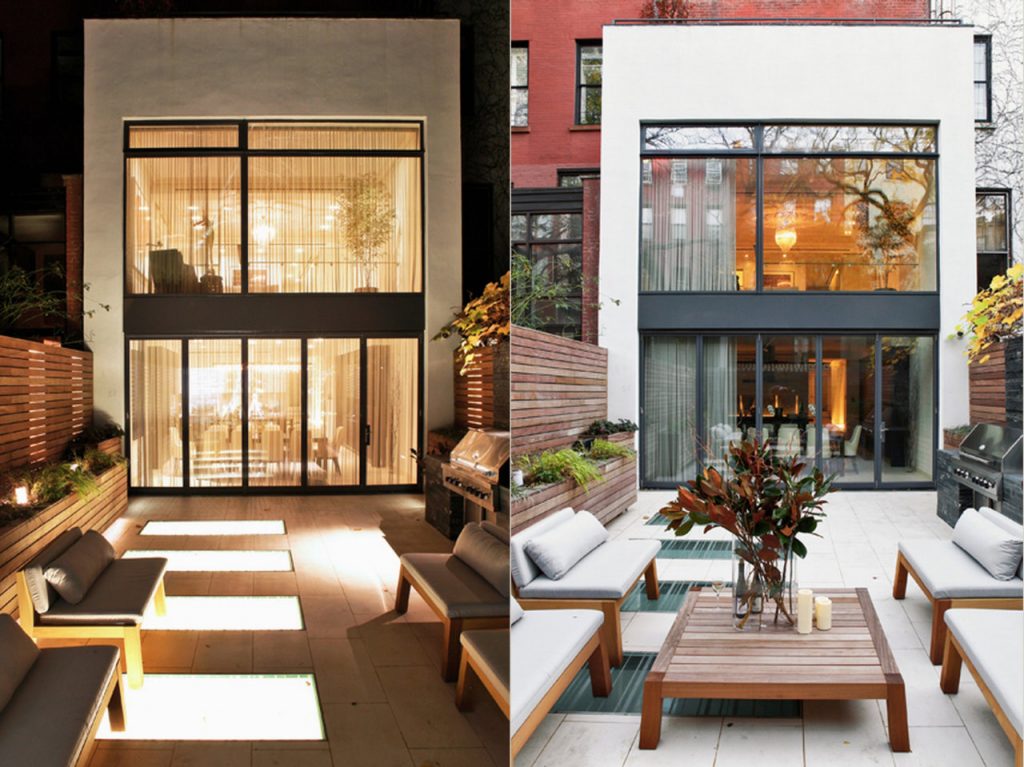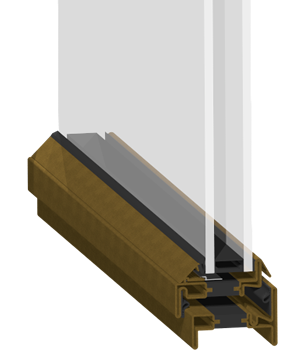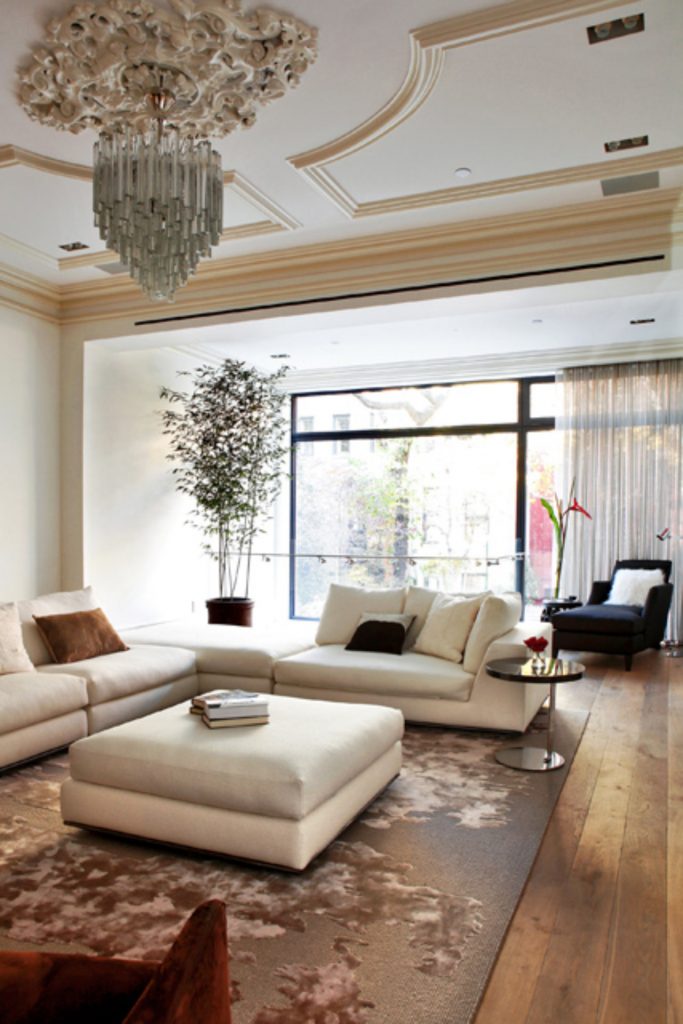Thermally broken windows are a popular choice for those seeking energy-efficient and condensation-resistant window solutions. These specially designed windows feature a thermal break, which acts as a barrier between the interior and exterior frames, minimizing heat transfer and reducing the risk of condensation. The thermal break enhances the overall energy efficiency of the window, improving its thermal performance and insulation properties.
With thermally broken windows, the interior surface of the window frame remains closer to room temperature, reducing the likelihood of condensation formation. This is particularly beneficial in areas with high humidity or extreme temperature variations. Whether you opt for thermally broken aluminum windows or thermally broken steel frames, these windows provide the perfect solution to prevent condensation and enhance comfort in your home.
Key Takeaways:
- Thermally broken windows feature a thermal break, which minimizes heat transfer and reduces the risk of condensation.
- The thermal break improves energy efficiency and thermal performance, enhancing the overall insulation of the window.
- Thermally broken windows keep the interior surface of the window frame closer to room temperature, reducing the likelihood of condensation formation.
- Whether it is aluminum or steel, choosing thermally broken windows can provide significant benefits in terms of energy efficiency and condensation resistance.
- Thermally broken windows are a valuable investment for anyone looking to create a more comfortable and energy-efficient home.
Understanding How Thermally Broken Windows Work
Thermally broken windows are designed to improve energy efficiency and thermal performance by utilizing a concept known as a thermal break. This insulating barrier is placed within the window frame, reducing heat transfer and minimizing conductive thermal energy loss.
The thermal break is typically made of a low thermally conductive material, such as polyamide. It is strategically positioned between the interior and exterior aluminum profiles of the window frame. By inhibiting the flow of thermal energy, the thermal break acts as a barrier, reducing heat transfer between the two profiles.
Thermally broken windows play a crucial role in preventing thermal bridging, which is the transfer of heat through the window frame. This phenomenon can lead to increased energy consumption, condensation, and reduced energy efficiency. By minimizing thermal bridging, thermally broken windows enhance the overall performance and insulation of the window.
Whether the window frame is constructed from aluminum or steel, thermally broken windows offer significant advantages. They improve energy efficiency, reduce heat transfer, and optimize thermal performance. As a result, these windows contribute to a more comfortable and energy-efficient living environment.

The Benefits of Thermally Broken Windows
Thermally broken windows offer numerous benefits that make them a valuable investment for any home or building.
1. Improved Energy Efficiency
One of the key advantages of thermally broken windows is their ability to enhance energy efficiency. By reducing heat loss and improving the overall thermal performance of the window, they help minimize the transfer of heat between the interior and exterior environments. This leads to lower energy consumption and potential cost savings.
2. Prevention of Condensation
Condensation can be a significant concern in windows, as excessive moisture buildup can lead to damage to walls, floors, and furnishings. Thermally broken windows help prevent condensation by minimizing the temperature differential between the interior and exterior surfaces of the window. This reduces the risk of condensation formation and ensures a healthier living environment.
3. Enhanced Thermal Insulation
Thermally broken windows provide improved thermal insulation, which helps to reduce heat transfer. By minimizing the flow of heat through the window frame, they help maintain a more comfortable interior environment and reduce the reliance on heating or cooling systems. This results in improved thermal comfort and energy efficiency.
With their enhanced condensation resistance and energy efficiency, thermally broken windows offer significant advantages over traditional windows. Whether you are looking to improve energy efficiency, reduce condensation, or enhance thermal insulation, choosing thermally broken windows is a smart choice for any home or building.
| Benefits of Thermally Broken Windows |
|---|
| Improved Energy Efficiency |
| Prevention of Condensation |
| Enhanced Thermal Insulation |

How Thermally Broken Windows Compare to Non-Thermally Broken Windows
Thermally broken windows offer significant advantages over non-thermally broken windows. The presence of a thermal break in thermally broken windows provides an insulating barrier that reduces heat transfer and improves thermal performance. In contrast, non-thermally broken windows lack this barrier, resulting in higher thermal conductivity and lower condensation resistance.
One of the main benefits of thermally broken windows is their enhanced energy efficiency. The thermal break in the window frame helps to minimize heat transfer, reducing the loss of warmth during colder months and preventing excessive heat gain during warmer months. This leads to lower energy consumption and improved comfort in the home.
Another advantage of thermally broken windows is their superior condensation resistance. The thermal break acts as a barrier between the interior and exterior surfaces of the window frame, reducing the temperature differential and minimizing the risk of condensation formation. This helps to prevent moisture buildup and potential damage to walls, floors, and furnishings.
In terms of thermal insulation, thermally broken windows outperform non-thermally broken windows. The presence of a thermal break significantly reduces the transfer of heat through the window frame, improving overall thermal efficiency and maintaining a more comfortable interior environment.
When it comes to material options, both thermally broken aluminum and thermally broken steel windows are available. These materials offer durability and strength, while the thermal break enhances their energy-saving properties.
To summarize, thermally broken windows provide superior energy efficiency, condensation resistance, and thermal insulation compared to non-thermally broken windows. Investing in thermally broken windows is a wise choice for those seeking a more comfortable and energy-efficient home.
The Impact of Thermally Broken Windows on Energy Efficiency
When it comes to energy efficiency, thermally broken windows make a significant difference. These specially designed windows are engineered to reduce heat transfer through the window frame, resulting in improved energy performance for your home.
One of the key features of thermally broken windows is the presence of thermal breaks within the window frame. These breaks act as insulating barriers, minimizing the transfer of heat between the interior and exterior of the window. By reducing heat transfer, thermally broken windows help maintain a more stable indoor temperature, which in turn leads to lower energy consumption.
The thermal breaks in thermally broken windows also enhance the overall thermal performance of the window, improving its U-value. The U-value measures the window’s insulation effectiveness, with lower U-values indicating better insulation. By improving the U-value, thermally broken windows contribute to better thermal insulation and energy efficiency in your home.
Moreover, thermally broken windows help prevent condensation formation, which is a common problem in buildings. Condensation occurs when warm, humid air comes into contact with a cold surface. With thermally broken windows, the interior surface of the window frame is closer to room temperature due to the insulating thermal breaks. This reduces the likelihood of condensation forming on the interior surface, preventing moisture damage and maintaining a healthier indoor environment.
The combination of improved thermal insulation, reduced heat transfer, and enhanced condensation resistance make thermally broken windows a valuable asset in achieving energy efficiency goals. By choosing thermally broken windows, you not only reduce your energy consumption and costs but also create a more comfortable and sustainable living environment.
| Benefits of Thermally Broken Windows for Energy Efficiency | Explanation |
|---|---|
| Reduced heat transfer | Thermal breaks minimize heat transfer through the window frame, improving energy efficiency. |
| Improved U-value | Thermally broken windows enhance the overall thermal performance of the window, resulting in better insulation. |
| Prevention of condensation | By minimizing the temperature differential between the interior and exterior surfaces, thermally broken windows help prevent condensation formation. |
| Lower energy consumption | Reduced heat transfer and better insulation lead to lower energy consumption, resulting in cost savings. |
How Thermally Broken Windows Minimize Condensation
Condensation can be a common problem on windows, leading to moisture buildup and potential damage. However, thermally broken windows offer a solution to minimize condensation and maintain a drier and healthier interior environment.
Thermally broken windows achieve this by reducing the temperature differential between the interior and exterior surfaces of the window. When warm, humid air comes into contact with a cold surface, condensation forms. With thermally broken windows, the interior surface of the window frame is closer to room temperature due to the insulating thermal break. This significantly reduces the likelihood of condensation formation on the interior surface.
The low thermal conductivity of the thermal break further enhances condensation resistance. It inhibits the transfer of thermal energy, minimizing the formation of cold surfaces within the window frame. By keeping the frame warmer, thermally broken windows help prevent condensation from occurring.
Additionally, the use of double glazing and a thermal spacer in thermally broken windows provides added insulation and further enhances condensation resistance. These features create an additional barrier against cold transfer and help maintain a more balanced temperature on the interior surface of the window pane.
To summarize, thermally broken windows minimize condensation by reducing the temperature differential, utilizing thermal breaks, and incorporating features like double glazing and thermal spacers. By choosing thermally broken windows, you can enjoy a drier and healthier interior environment while maintaining the energy efficiency and thermal performance of your windows.
Benefits of Thermally Broken Windows in Minimizing Condensation:
- Reduces temperature differential between interior and exterior surfaces
- Insulating thermal break minimizes cold surfaces within the window frame
- Low thermal conductivity inhibits thermal energy transfer
- Double glazing and thermal spacer enhance insulation and condensation resistance
| Condensation Factors | Traditional Windows | Thermally Broken Windows |
|---|---|---|
| Temperature Differential | High | Reduced |
| Interior Frame Temperature | Cold | Warmer |
| Thermal Conductivity | High | Low |
| Double Glazing | N/A | Included |
| Thermal Spacer | N/A | Included |
The Importance of Thermally Broken Windows in Extreme Climates
Thermally broken windows play a crucial role in extreme climates, offering significant benefits for both cold and hot regions. In colder climates, these windows help prevent heat loss through the window frame, ensuring optimal energy efficiency and reducing the risk of condensation formation on the interior surface. The thermal breaks within the window frame effectively minimize thermal bridging, preventing conductive thermal energy loss and keeping the interior frame close to room temperature.
On the other hand, in hot climates, thermally broken windows act as a barrier, reducing the transfer of thermal energy from the exterior to the interior. This helps maintain a cooler indoor temperature, reducing the reliance on air conditioning and improving overall energy efficiency.
Whether you live in a region with extreme cold or hot weather conditions, investing in thermally broken windows is essential to enhance comfort and energy efficiency in your home.
Benefits of Thermally Broken Windows in Extreme Climates:
- Prevention of heat loss in cold climates
- Reduced condensation formation on interior surfaces
- Minimization of thermal bridging and conductive thermal energy loss
- Improved energy efficiency and cost-effectiveness
- Maintenance of a cooler indoor temperature in hot climates
- Reduced reliance on air conditioning and lower energy consumption
By installing thermally broken windows, you can create a comfortable and energy-efficient living space, regardless of the extreme climate conditions.
| Climate Type | Benefits of Thermally Broken Windows |
|---|---|
| Cold Climates | Prevent heat loss and condensation formation Reduce thermal bridging and conductive thermal energy loss Improve energy efficiency and cost-effectiveness |
| Hot Climates | Reduce heat gain from exterior to interior Maintain a cooler indoor temperature Lower reliance on air conditioning and energy consumption |
The Versatility of Thermally Broken Windows
Thermally broken windows are a versatile choice for window design, offering various operational styles to suit your preferences and needs. Whether you prefer single and double-hung, sliding, casement, awning, or picture windows, there are options available with thermally broken frames.
Their operational styles provide flexibility and enhance the aesthetic appeal of your home. The thermal breaks within the window frame ensure energy efficiency and condensation resistance regardless of the style you choose.
For those looking for traditional charm, single and double-hung windows provide a classic look and easy ventilation control. Sliding windows offer a sleek and modern design with effortless operation, perfect for contemporary homes. Casement windows open outward, providing excellent ventilation and a tight seal when closed. Awning windows are hinged at the top and open outward, ideal for adding natural light and ventilation to small spaces. Picture windows are designed to bring outside views to life and make a statement with their expansive glass surface.
Furthermore, manufacturers offer specially shaped windows, allowing for even more design possibilities with thermally broken frames. From arched and circular windows to triangular and trapezoidal ones, the options are limitless.
With their wide range of operational styles, thermally broken windows can be seamlessly integrated into any architectural design, enhancing both the energy efficiency and visual appeal of your home.
| Window Style | Description |
|---|---|
| Single and Double-Hung | Classic style with vertically sliding sashes for easy ventilation control. |
| Sliding | Sleek design with horizontally sliding sashes for a modern look and easy operation. |
| Casement | Hinged to open outward, providing excellent ventilation and a tight seal when closed. |
| Awning | Hinged at the top, opens outward to allow for ventilation and natural light in small spaces. |
| Picture | Designed to showcase outside views and maximize natural light with a large glass surface. |

The Value of Thermally Broken Windows in Home Renovations
When it comes to home renovations, one important aspect that often gets overlooked is the windows. Upgrading your windows during a renovation project can have a significant impact on the overall energy efficiency and thermal performance of your home.
Thermally broken windows, in particular, offer immense value when it comes to home renovations. These windows are specially designed with thermal breaks, which are barriers within the window frame that prevent heat transfer and minimize thermal bridging.
By choosing thermally broken windows for your renovation project, you can enjoy the following benefits:
- Improved Energy Efficiency: Thermally broken windows greatly reduce heat loss and draughts, helping to create a more comfortable living environment while lowering your energy consumption and heating costs.
- Enhanced Thermal Performance: With their thermal breaks, these windows maintain a more consistent indoor temperature, preventing hot or cold spots near the windows and ensuring greater comfort throughout your home.
- Condensation Resistance: The thermal breaks in thermally broken windows minimize the risk of condensation forming on the interior surface, reducing the potential for moisture damage and improving the overall air quality in your home.
In addition to these benefits, thermally broken windows also add value to your home by providing a sleek and modern aesthetic. Their improved energy efficiency and condensation resistance make them an attractive feature for potential buyers.
Whether you are renovating your entire home or simply updating the windows, investing in thermally broken windows is a smart choice. They offer a significant improvement in energy efficiency, thermal comfort, and overall value. So, why wait? Upgrade your windows with thermally broken windows today and enjoy the lasting benefits for years to come.
Investing in Thermally Broken Windows: A Wise Choice
Investing in thermally broken windows is a wise choice for several reasons. Firstly, they offer significant energy efficiency benefits by reducing heat loss, improving thermal insulation, and minimizing condensation formation. This leads to lower energy consumption and cost savings over time.
Secondly, thermally broken windows enhance overall comfort by maintaining more stable interior temperatures and reducing heat transfer. This creates a more pleasant living environment and reduces the need for heating or cooling.
“Thermally broken windows provide excellent energy efficiency and insulation. They minimize heat loss, keep our home comfortable, and save us money in the long run.” – John Smith, Homeowner
Additionally, thermally broken windows add value to your home, both in terms of energy efficiency and aesthetic appeal. Their enhanced thermal performance and condensation resistance make them an attractive feature for potential buyers.
- Lower energy consumption
- Improved comfort
- Increased home value
By investing in thermally broken windows, you are making a smart choice that improves the energy efficiency, comfort, and value of your home.
The Future of Energy Efficiency: Thermally Broken Windows
Thermally broken windows are revolutionizing the future of energy efficiency. As the demand for sustainable building practices continues to grow, these windows are playing a pivotal role in improving energy performance.
One of the key advantages of thermally broken windows is their ability to reduce heat loss and improve thermal insulation. By utilizing thermal breaks, which are insulating barriers within the window frame, they minimize heat transfer and prevent thermal bridging. This results in reduced energy consumption, lower carbon emissions, and improved indoor comfort.
Furthermore, thermally broken windows offer exceptional condensation resistance. By minimizing the temperature differential between the interior and exterior surfaces of the window, they help prevent moisture buildup and potential damage to walls and furnishings. This not only contributes to a healthier indoor environment but also reduces maintenance costs.
In addition to their energy efficiency and condensation resistance, thermally broken windows also have a significant environmental impact. By reducing energy consumption, they help mitigate the need for fossil fuel-based energy sources, leading to a decrease in greenhouse gas emissions. This makes them an eco-friendly choice for sustainable buildings and homes.
As regulations and standards continue to prioritize energy efficiency, thermally broken windows are expected to become increasingly prevalent in new constructions and renovations. Their ability to enhance thermal performance, while also providing aesthetic appeal and long-term durability, makes them an attractive choice for architects, contractors, and homeowners alike.
| Advantages of Thermally Broken Windows | Benefits |
|---|---|
| Enhanced Energy Efficiency | Reduced energy consumption, lower carbon emissions, and cost savings |
| Improved Condensation Resistance | Prevention of moisture buildup, healthier indoor environment, and reduced maintenance costs |
| Positive Environmental Impact | Decreased reliance on fossil fuel-based energy sources and reduced greenhouse gas emissions |
| Sustainable Building Solution | Compliance with energy efficiency regulations and standards, durability, and long-term value |
Investing in thermally broken windows is not only a wise choice for energy-conscious individuals but also a step towards a future of sustainable and eco-friendly buildings. The combination of their energy efficiency, condensation resistance, and positive environmental impact makes them an invaluable asset for a greener world.
Conclusion
In conclusion, our thermally broken windows offer numerous benefits for homeowners and building owners alike. With their advanced design and insulating thermal breaks, these windows enhance energy efficiency, reduce condensation, and provide superior thermal performance. Whether you are replacing old windows, renovating your home, or constructing a sustainable building, our thermally broken windows are an excellent choice.
By choosing our thermally broken windows, you can enjoy the advantages of improved energy efficiency and lower energy consumption. The thermal breaks within the window frames minimize heat transfer, ensuring a more comfortable interior environment and reducing the need for excessive heating or cooling. Additionally, the advanced window frame design prevents condensation formation, protecting your walls, floors, and furnishings from potential moisture damage.
Our thermally broken windows are not only practical but also contribute to sustainable buildings. By reducing energy consumption and improving thermal performance, they play a crucial role in creating more environmentally friendly spaces. So, whether you prioritize energy efficiency, condensation resistance, or superior comfort, our thermally broken windows are the solution you’ve been looking for to enhance your home or building.
FAQ
Can condensation occur on thermally broken windows?
No, condensation is less likely to occur on thermally broken windows due to the insulating barrier created by the thermal break, which minimizes heat transfer and reduces the temperature differential between the interior and exterior surfaces of the window.
How do thermally broken windows work?
Thermally broken windows utilize a thermal break, an insulating barrier within the window frame that reduces heat transfer and improves energy efficiency. This thermal break minimizes conductive thermal energy loss, improves thermal insulation, and inhibits the flow of thermal energy through the window frame.
What are the benefits of thermally broken windows?
Thermally broken windows offer improved energy efficiency, reduced condensation, and enhanced thermal performance. The thermal breaks within the window frame improve insulation, minimize heat loss, and maintain a more comfortable interior environment. They also reduce the risk of condensation formation on the window frame and interior surfaces.
How do thermally broken windows compare to non-thermally broken windows?
Thermally broken windows provide superior energy efficiency and condensation resistance compared to non-thermally broken windows. The thermal break in thermally broken windows reduces thermal conductivity and prevents heat transfer, improving the overall performance and insulation of the window.
What is the impact of thermally broken windows on energy efficiency?
Thermally broken windows enhance energy efficiency by reducing heat loss, improving thermal insulation, and minimizing condensation formation. They help maintain a more stable indoor temperature, reducing the need for heating and cooling and resulting in lower energy consumption and cost savings.
How do thermally broken windows minimize condensation?
Thermally broken windows minimize condensation by reducing the temperature differential between the interior and exterior surfaces of the window. The insulating thermal break and low thermal conductivity inhibit the transfer of thermal energy, minimizing the formation of cold surfaces and reducing the risk of condensation.
Why are thermally broken windows important in extreme climates?
In extreme climates, thermally broken windows help prevent heat loss through the window frame and reduce the risk of condensation formation. The thermal breaks minimize thermal bridging, ensuring that the interior frame remains closer to room temperature and improving energy efficiency.
What operational styles are available for thermally broken windows?
Thermally broken windows are available in various operational styles, including single and double-hung, sliding, casement, awning, and picture windows. This allows for versatility and flexibility in window design based on aesthetic preferences and functional needs.
How do thermally broken windows add value to home renovations?
Thermally broken windows improve energy efficiency, reduce heat loss, and provide better thermal performance, making them a valuable addition to home renovations. They enhance comfort, minimize draughts, and create a more energy-efficient living environment, ultimately adding value to the home.
Why should I invest in thermally broken windows?
Investing in thermally broken windows is a wise choice as they offer significant benefits in terms of energy efficiency, condensation resistance, and overall comfort. They reduce heat loss, improve insulation, and contribute to lower energy consumption, making them a valuable investment for any home or building.
What is the future of energy efficiency with thermally broken windows?
As sustainable building practices gain momentum, thermally broken windows will play a significant role in improving energy performance in buildings. With their ability to reduce energy consumption, lower carbon emissions, and enhance indoor comfort, they will become increasingly prevalent in new constructions and renovations.



